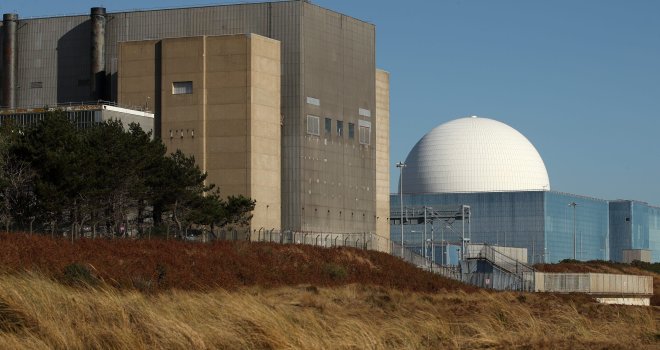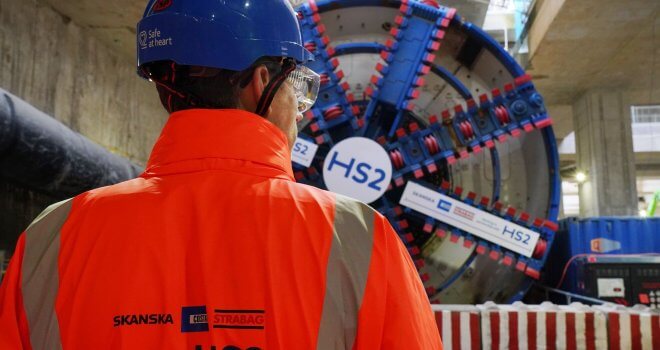The Mother Of All Projects

Last year, the famous building blocks brand Lego launched a complete replica of the UK parliament building, known as the Palace of Westminster. The set, which when complete stands 60cms tall, contains more than 4,000 pieces and is rated ‘expert’. According to the guidelines, youngsters under the age of 16 will likely struggle with the mammoth build.
But while teenagers and adults alike get stuck into this lengthy and engaging job of work, in London policymakers, consultants and real estate experts are chewing over the prospect of completely modernising the real thing.
To put this project into perspective, the life-size Palace of Westminster has as many windows as its Lego equivalent has pieces. If it was set end-to-end it would be the second tallest building in the UK, narrowly surpassed by the Shard.
In all, it occupies about eight acres of prime London real estate, part of which was reclaimed from the river Thames during the Victorian rebuild which itself took roughly 30 years. When the building was bombed during the second world war, it wasn’t habitable again until 1950.
Indeed, rebuilding the Palace to 21st Century standards is a gig of epic dimensions. From any angle it is eye-wateringly complex, with a risk profile stretching into the distance and banana skins at every step. The UK’s seat of government is gradually falling apart. It is structurally unsound, a fire risk and is riddled with asbestos.
It is energy inefficient and environmentally harmful, there is extensive water damage, and utility networks are antiquated. There are also mice, pigeons and moth infestations, and sewer water is seeping in.
If this was social housing it would have been condemned long ago, but it’s a grade I listed UNESCO World Heritage site with profound significance for the country’s democracy and tourism industry. Demolishing and replacing is not an option.
More than just masonry
Alas, the size, condition and position of the Palace are not the only challenges it faces. It houses 650 members of parliament and 800 Lords, as well as innumerable civil servants and support staff, all of who would likely have to be rehomed while the work is carried out.
These would need to carry on work as normal; the Lords operating in tandem with the Commons to debate and develop government policy. Grand occasions like the Queen’s Speech and the Budget cannot be compromised.
Oh yes, and it’s a piping hot political potato. Spending billions of pounds of taxpayer cash on a swanky new home for MPs and peers does not look good in an age of austerity; even less so as the UK is buffeted by the fallout from Brexit. Backers in Parliament risk the electorate’s ire.
According to Vicky Fowler, a partner at Gowling WLG, this moral maze is matched by an abundance of legal red tape. In context, the Palace of Westminster’s acronym, PoW, feels remarkably apt.
“The main area for consideration by planners will be the heritage status of the PoW. Planners will need to balance the need to protect listed features against the requirement to modernise it for the 21st Century.
“National planning policy states that great weight should be given to the conservation of heritage assets. Significance can be harmed or lost through alteration or destruction of a heritage asset or development within its setting. As heritage assets are irreplaceable, any harm or loss requires clear and convincing justification.
“All of the proposed works will need to be assessed to understand their effect on the listed features of the PoW with a view to concluding that the effect of the works will not have substantial harm. Any finding of substantial harm runs the risk of a refusal of consent.”
Planning, with its investigations, objections and revisions sets the rebuild back from day one and lends weight to predictions by some observers of a three-decade timescale for the work.
Earlier this year essential repairs started on the Elizabeth Tower which houses Big Ben. This comparatively minor job, which nevertheless essentially stops the thing falling over, necessitated a long list of permissions before it could even start.
“It included requirements for all new work and improvements inside and outside the building to match existing original adjacent work in terms of the choice of materials, method of construction and finished appearance,” says Fowler.
The wider Palace will be even more complicated: “Disturbance of existing ornamental features including chimney pieces, plasterwork, architraves, panelling, doors and staircase balustrades is restricted unless changes were shown on the approved drawings.
“There is a need to protect those features properly during work on site. Approval for the methodology for stone cleaning and stone repairs is also required.”
Local planning policy must be observed and, in a modern era in which all stakeholders must be accounted for, the job has to promote local employment and support apprenticeships – all the while covering the basics of time and budget.
“What were once seen as onerous requirements have become the norm and no doubt over the life of the renovation best practice will move on,” says Fowler. “The conundrum is how you capture that best practice while at the same time providing cost certainty, particularly if the work is to take 32 years to complete.”
No precedents, only warning signs
The project is vulnerable to traps that other schemes have already fallen into. The high-speed rail link HS2 has been postponed several times because of various objections, and London’s Crossrail development is complicated by the need to keep Tube stations open while the land around them is bored through.
Then there is the scourge of cost and deadline-creep. HS2 and the ongoing bid to build extra capacity for the UK’s congested airports are golden examples of how the parameters of large projects become elastic over time.
HS2, which will accelerate journey times between London, Birmingham and Crewe, has faced successive delays due to legal challenges, contract disputes and revisions. It’s current completion date of 2033 is optimistic, yet even by that date rival transport innovations could easily provide faster and more efficient connections.
The leading remedy for the UK’s clogged airways is a third runway at Heathrow, but despite being given a tacit green light by the government it is facing extended delays due to problems of noise, environmental damage and political reluctance to break ground.
Keith Baxter, who is CEO of De-Risk and a published expert on the subject of project risk management, says Parliament will suffer the same overruns.
“The unique nature of this programme, combined with complexities means that any timescale and budget estimates come with a high degree of risk,” he explains.
“Traditional risk management approaches are unlikely to provide any insight into the real challenges to the programme. The psychology behind risk means that senior management will continue to be overly optimistic to satisfy political expectations.
“In similar major infrastructure programmes that we have analysed, the projected completion dates that we calculated were rejected, despite the fact that all the raw data came from their team. In each case, the projected dates proved accurate, showing that the teams do have the insight and combined knowledge if senior management are prepared to believe it.”
A never-ending story?
Yet the authorities are far from cavalier in their approach. A pre-feasibility study on the renewal was published five years ago. This led to the award of an independent options appraisal contract in December 2013 to a consortium of companies led by Deloitte Real Estate.
A report by the group, published in June 2015, gave three options starting with a rolling programme of works largely fitting in around normal Parliamentary businesses, costing £5.7bn and taking 32 years to complete the “minimum” upgrade.
At the other end of the spectrum is a six-year intensive build incorporating a clear out of staff from the building, costing between £3.5 and £3.9bn.
In July that year a cross-party committee was created to consider the options. Then in September the following year – a full 15 months later – it published a report concluding Westminster “faces an impending crisis which we cannot responsibly ignore”.
From that day to this, events have accelerated slightly. The issue was debated in Parliament in January and, in March, the Public Accounts Committee recommended that Parliament should leave the palace while works were taking place.
But people might have to clear their desks, at least temporarily, well in advance. Important survey work needs to be undertaken that cannot happen otherwise. Planners are already investigating which government properties could be used as temporary accommodation if this solution gets the thumbs up. Perhaps the Department for Health, maybe the Foreign Office.
It’s understandable that MPs are reluctant to push the button on the palace rebuild. But if they don’t do it soon they’ll be conducting parliamentary business under rubble, breathing asbestos and sharing their lunch with the pigeons.
If you have some advice for the powers that be, we’re interested to hear it. Send your comments on this or any other issue to editor@pmtoday.co.uk.
This piece was originally published in 2016.




